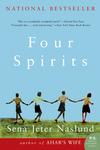You may be wondering, "Who is Fred Shuttlesworth?" Well, he's a lesser-known and highly-respected Civil Rights leader, a preacher who spent the early years of the movement suffering for the cause of equality amid bombings, riots, and firehoses in the Magic City of Birmingham.
I first encountered this living legend at a memorial service on the 37th anniversary of the September 15, 1963, bombing of Sixteenth Street Baptist Church, in which the lives of four little girls were brutally extinguished. I was covering the service for the school paper, as well as for credit for a course entitled "Civil Rights and Justice." But I hope I might have gone anyway, if only to hear the man preach. Rev. Shuttlesworth struck me first as a powerful speaker, but what held my attention was his faithfulness to proclaim true unity and equality in Christ alone. His unique experiences provided a strong witness to his theology of suffering and the cross. You can read more about his life online in this book review or you may want to check out the book itself.
 Though he is not a central character of Sena Jeter Nashlund's loosely historical novel Four Spirits, Reverend Shuttlesworth figures prominently during the first half of the book. He also serves as a motivating force for many of the characters who continue to fight for equal rights because of his influence. His interplay among the varied voices Naslund presents provides one of the many reasons I would endorse Four Spirits as a must-read for anyone interested in the struggles of the Civil Rights Movement. He is figured prominently and accurately as a fiery champion of the local working-class black people, set against King's more refined influence among the national media.
Though he is not a central character of Sena Jeter Nashlund's loosely historical novel Four Spirits, Reverend Shuttlesworth figures prominently during the first half of the book. He also serves as a motivating force for many of the characters who continue to fight for equal rights because of his influence. His interplay among the varied voices Naslund presents provides one of the many reasons I would endorse Four Spirits as a must-read for anyone interested in the struggles of the Civil Rights Movement. He is figured prominently and accurately as a fiery champion of the local working-class black people, set against King's more refined influence among the national media.The book itself comprises the viewpoints of a diverse cast of characters, from a fierce single black mother buoyed by the momentous events swirling around her to an almost stereotypically cruel member of the KKK. However, the events of the novel are most often seen through the eyes of Stella, a white student at Birmingham-Southern College, who feels caught up in the pulse of the movement despite her quiet nature. Along with Stella, the reader grieves at the death of JFK and mourns the loss of civil rights protestors. From her vantange point atop Vulcan she is oblivious to Bull Connor's brutal attacks, though other characters offer a portrait of the protests in harsh detail. Naslund focuses in and out of scenes with telescopic precision, weaving stories of both fictional and historical events from the perspectives of participants, spectators, and agitators. Most notably, she magnifies the Sixteenth Street Baptist Church bombing so that the murder of four innocent girls resonates throughout the novel.
Though I only lived in Birmingham for four years, I know the streets, the monuments, the buildings featured in Four Spirits. I only saw the aftermath, of course: the Birmingham Civil Rights Museum has replaced Bull Connor's firetrucks and the 16th Street church appears solid once more. However, because of my experience growing up in lower Alabama, even twenty to thirty years after the events portrayed here, I still felt the tension, the heated emotion, and the injustice that remains because of individuals' refusal to be blind to skin color. My personal connections only served to heighten my reading experience, as I tried to imagine Birmingham's landmarks in their 1960's guise.
However, what affected me the most was the historic connection in Nashlund's novel between two colleges-- Birmingham-Southern, my (and Nashlund's) alma mater, and Miles, a historically black college less than 5 miles away. In the 1960's, students from both colleges taught together at an integrated night school, in a dangerous experiment in racial reconciliation.
In a parallel encounter, while I was a student at 'Southern in the late 90's, our InterVarsity chapter partnered with students from Miles in ministry and service, and that intercollegiate relationship continues to flourish to this day. In reading this novel, I not only encountered a unique perspective on Birmingham's history, I also discovered my place within that same, ongoing narrative. Though we are told to study history lest we are doomed to repeat it, sometimes, history repeats itself in order to continue a narrative that wasn't yet finished. I pray the current students at Miles and BSC would continue to build bridges of reconciliation between the two campuses so that "Bombingham" may remain a thing of the past.
No comments:
Post a Comment